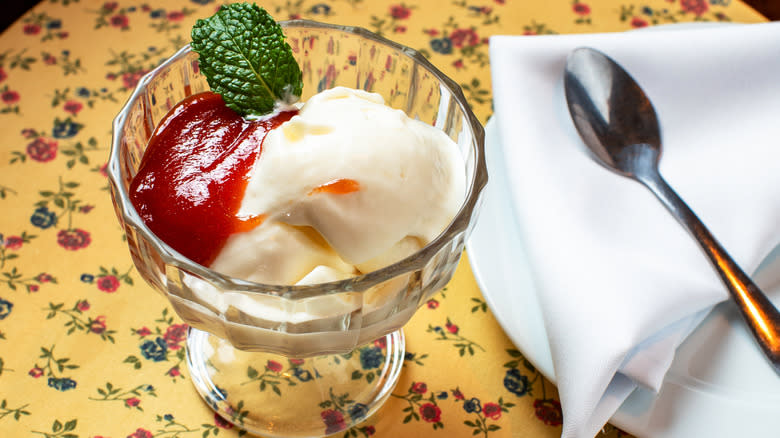Marlow, The Marshmallow Dessert Beloved By 1920s Silent Screen Icon Clara Bow

For movie buffs and historians, Clara Bow's name will forever be cemented as the physical embodiment of the Roaring Twenties. Her "it girl" magnetism effortlessly controlled the focus of a film, while her liberated lifestyle drew intrigue from audiences. The namesake of the "it girl" title, a 1927 silent film called "It," catapulted Bow into further success, which helped land her a recipe contribution in Photoplay magazine. Called "chartreuse chicken," the recipe was described as "a dish with lots of 'IT,'" and readers were told to "try it on the boy-friend."
Bow's feature — along with the recipe — was an obvious hit with fans, as she had several more recipes published in Photoplay. In 1933, Bow contributed a dessert to the magazine, which was a marshmallow dish called marlow. Derived from the word marshmallow, marlow is a variation on ice cream, as it involves whipping heavy cream and combining it with melted marshmallows.
To create Bow's vanilla marlow, you'll need marshmallows, milk, vanilla, and whipping cream. After heating the milk and marshmallows together, you'll add everything else in. Once everything has been mixed and cooled, pour it into trays and freeze it.
Read more: 25 Best Ice Cream Brands Ranked
Is Clara Bow Credited As Marlow's Inventor?

As someone who claimed they lacked the cooking skills to even boil water, Clara Bow was an honest recipe contributor. She admitted that the recipes she submitted to magazines were courtesy of her cook, and she even confessed to missing her chef while she was away from Los Angeles. That being said, neither Bow nor her cook were the original creators of the recipe, as it can be traced back to the 18th-century icebox method of making ice cream. By the early 1900s, marshmallows made their way onto the scene and became a popular addition to many desserts — including ice cream.
During World War II and the 1950s, marlow was seen in many recipe books. It was revered during the war as an obtainable treat because it did not require any added sugar, which became a delicacy due to shortage and rations. It continued to be a popular dessert up until the 1960s, when it mysteriously and abruptly disappeared, which may have been in part due to the increased accessibility of ice cream machines for average consumers.
Even though marlow's rich past was wiped away with history — much like Bow's career — online bloggers have inspired a small resurgence of the confection. Flavored versions like rhubarb, mocha, and cherry can easily be whipped up at home, and it's simple to add in your own additions.
Read the original article on Tasting Table.

